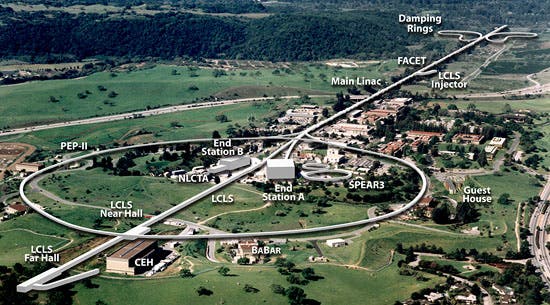The Standard Model of Physics is currently the accepted model which describes how sub-atomic particles behave and interact in the Universe. A recent analysis of data gathered by a decade-long experiment at the US Department of Energy’s SLAC National Accelerator Laboratory, shows a certain particle decay happening at a pace far exceeding that predicted by the Standard Model. This suggests possible flaws in the current Standard Model of Physics, which could mandate a reconfiguration of the model.
The data comes from the BaBar experiment, based at the DOE’s SLAC National Accelerator Laboratory, which observed particle collisions from 1999 to 2008. Findings suggest a particular type of particle decay called ‘B to D-star-tau-nu‘ happens more often than the Standard Model says it should.
“The excess over the Standard Model prediction is exciting,” said BaBar spokesperson Michael Roney of the University of Victoria in Canada. “But before we can claim an actual discovery, other experiments have to replicate it and rule out the possibility this isn’t just an unlikely statistical fluctuation.”
“If the excess decays shown are confirmed, it will be exciting to figure out what is causing it,” said BaBar physics coordinator Abner Soffer, associate professor at Tel Aviv University. “We hope our results will stimulate theoretical discussion about just what the data are telling us about new physics.”

SLAC National Accelerator Laboratory is home to a two-mile linear accelerator—the longest in the world. Originally a particle physics research center, SLAC is now a multipurpose laboratory for astrophysics, photon science, accelerator, and particle physics research.
The BaBar experiment might hold implications for the Higgs bosons properties as well – a hypothetical elementary particle predicted by the Standard Model (SM) of particle physics, which scientists believe is responsible for granting particles mass. The BaBar study predicts Higgs bosons interact more strongly with heavier particles – such as the B mesons, D mesons, and tau leptons – than lighter ones.
“If the excess decays shown are confirmed, it will be exciting to figure out what is causing it,” says BaBar physics coordinator Abner Soffer, associate professor at Tel Aviv University.
“We hope our results will stimulate theoretical discussion about just what the data are telling us about new physics.” added Soffer.
The team of researchers involved in the BaBar experiment note that upcoming experiments might lead to the confirmation of these findings. If the Belle experiment at the Japanese high-energy physics laboratory KEK replicates the finding, “the combined significance could be compelling enough to suggest how we can finally move beyond the Standard Model,” said researchers.
The findings were presented at the 10th annual Flavor Physics and Charge-Parity Violation Conference in Hefei, China, and were also published in the journal Physical Review Letters.









